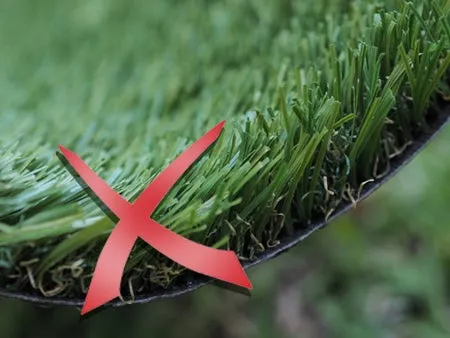Artificial turf on a road verge
Artificial turf is not able to be installed on council-controlled road verges.
Road verges play an important role in our neighbourhoods. They impact on environmental health, visual appeal, character and safety.
Council does not allow using artificial turf on council-controlled road verges. This information is also available via our artificial turf on council controlled road verge fact sheet (PDF, 267KB).
Traditional road verges consist of grass with council provided gardens and street trees. But there is growing demand for alternative road verge treatments, especially artificial turf.
Council recognises that there are benefits to using artificial turf in some locations, for example:
- in residential courtyards
- sport courts.
Why artificial turf is not allowed on council-controlled road verges
Artificial turf is not able to be installed on council-controlled road verges for the following reasons:
Utilities
Service providers may need emergency access to the following utilities located underneath the road reserve:
- water
- sewer
- electrical
- gas
- telecommunications.
Service providers do not cover the cost to fix verge treatments such as artificial turf.
Street trees
Having artificial turf installed presents a barrier to council installing street trees.
Product deterioration
The quality of the artificial turf can deteriorate in several ways:
- The sub-surface of the artificial turf may sink or wash out.
- Pinned edges may become loose and present a tripping hazard.
- It is subject to vandalism including burn marks from push bike skids and cigarette butts.
- Animal faeces and urine, may affect the product.
- The turf is prone to general wear from leaf drops, food and drink spills and dropped chewing gum.
Experience and look
Studies have found that solar radiation can make the turf up to 65°C hotter than natural grass. This increases the ambient temperature adding to the urban heat island effect. (Jim C.Y., 2016, Intense summer heat fluxes in artificial turf harm people and environment, Landscape and Urban Planning 157 (2017), 561–576).
Artificial turf can be hotter to walk on and does not feel the same as walking on natural grass.
Artificial turf looks different than natural turf and does not fit the ‘natural’ theme with existing streetscapes and landscapes.
Environmental impact
Natural grass areas provide a microhabitat for worms, insects and organisms living in the soil, grass and root zone. This is part of the ecosystem that attracts birds, macropods and other wildlife to an area.
Plants need to absorb nutrients, water and oxygen through the soil for nutrition and fertility.
Compacting the ground before installation can compromise the health of trees and gardens. This is due to pressure on roots and lack of oxygen.
When installing artificial turf, tree roots may be damaged during preparation of the area. This compromises the health and life expectancy of affected trees or vegetation.
The artificial turf is non-renewable and at the end of its life is sent to land fill.
Health and safety
Under the Land Act 1994, council must:
- protect the health and safety of persons using local government-controlled land and roads.
- preserve features of the natural and built environment of local government-controlled areas.

Planning Scheme and Environment and Liveability Strategy
Council does not recommend installation of artificial turf on road reserves. This is consistent across both the 2014 Sunshine Coast Planning Scheme and 2017 Environment and Liveability Strategy and considers factors such as:
- stormwater management
- temperature mitigation of public areas
- preserving the natural character and amenity of neighbourhoods.
The information from this page is also available via our artificial turf on council-controlled road verge fact sheet (PDF, 267KB).
